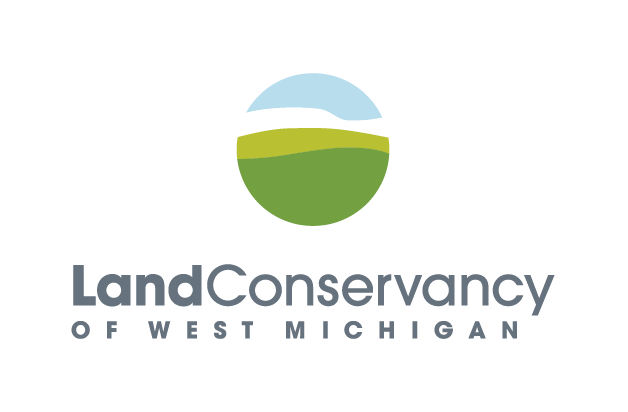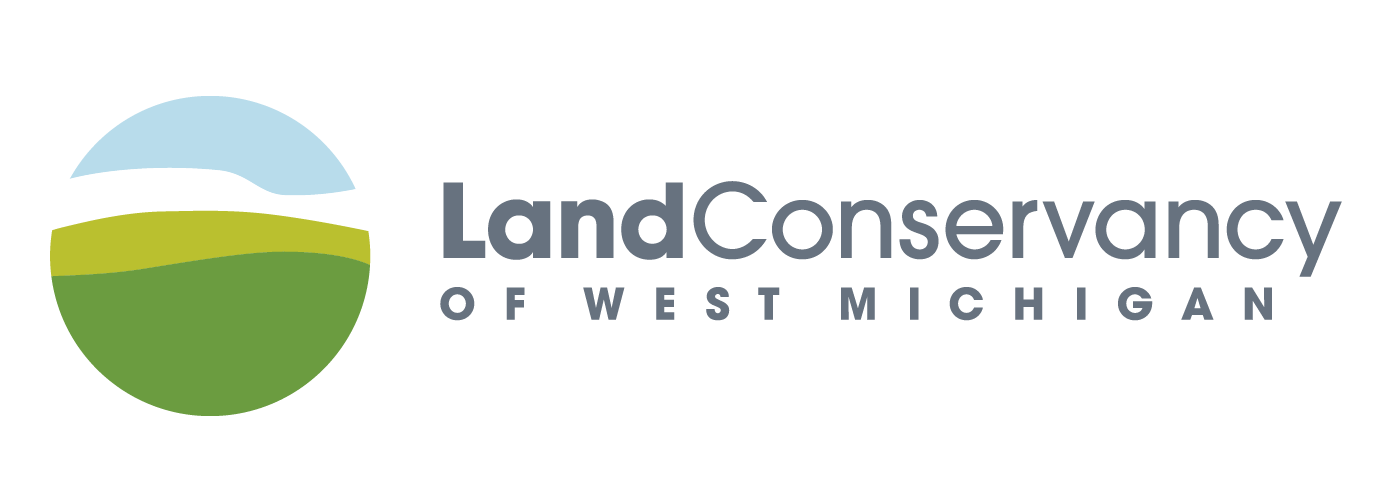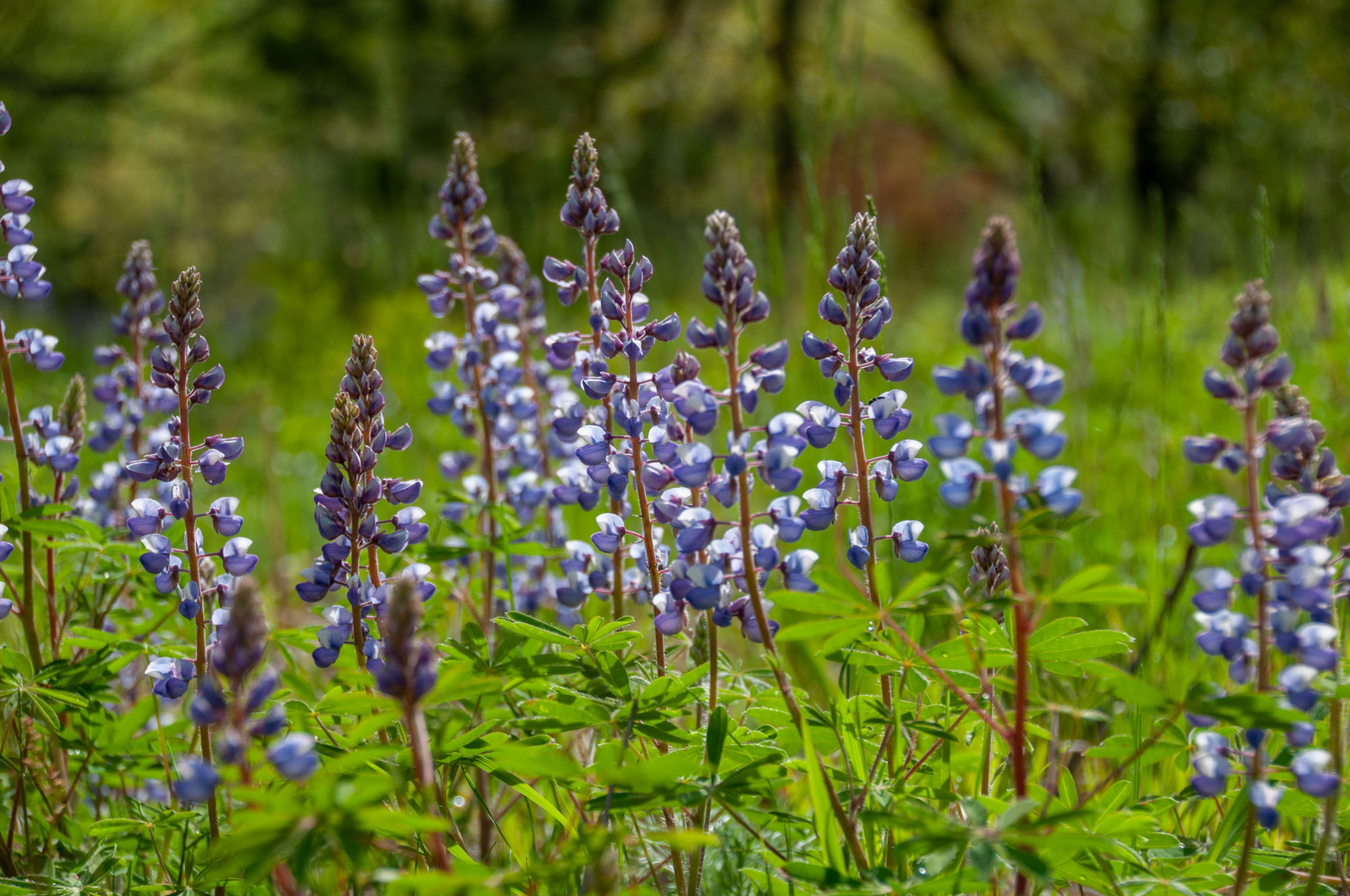
A Forest in Recovery
This summer, 5 acres of pine trees will be removed from Brower Lake Nature Preserve. But why would we cut down perfectly healthy trees? Unlikely as it may seem, sometimes cutting down trees is the best way to help an ecosystem flourish. Removing pine trees is part of our management plan to restore Brower Lake to its native, and critically important, oak woodland ecosystem.

The Site:
Brower Lake Nature Preserve, established in 2002 with the generous support of the Wege Foundation, is a natural gem in an otherwise developed area. Its impressive forest is full of winding trails and seasonal carpets of wildflowers. There’s a bog, home to a host of bizarre and fascinating plants. In addition to the mature oak-hickory forest, Brower Lake harbors one of Michigan’s rarest ecosystems: an oak barren. An oak barren is essentially a prairie, although sometimes you’ll find a shrubby understory, with scattered oaks throughout. Many native Michigan species depend on this disappearing ecosystem, especially birds, butterflies, and grasshoppers, among others.

The Problem:
This haven is threatened – not by developers looking to build another strip mall or fast food hub – but by other trees. In the 1800s, the Brower Lake region was logged, and much of the area was replanted with Red Pine (Pinus resinosa) and Scotch Pine (Pinus sylvestris). While there are many Michigan ecosystems that claim majestic pine species, Brower Lake’s oak woodland (meaning both oak forest and oak barrens) is not one of them. In this area, red and scotch pine do great damage to the native ecosystem. Many plants native to this ecosystem need direct sunlight, but the pine canopies crowd together and shade the understory densely. Additionally, pine needles fall and collect into a thick carpet on the forest floor, suffocating seedlings. These impacts change the dynamic of the ecosystem, edging out the increasingly important oak barren.

The Solution:
Removing pines will help restore oak woodland and increase biodiversity and wildlife habitat. The pine stand here does not provide suitable homes for much of our Michigan wildlife. Without pines shading the area, most plant species native to oak woodlands will recover on their own. Over the next few years, areas that need extra help will be planted with native trees, grasses, and wildflowers. The photo below shows an example of a healthy oak barrens at Maas Family Nature Preserve, a nearby Land Conservancy preserve.
In the years to come, bear witness to how this ecosystem bounces back to the lush oak woodland that is such an iconic and important biodiverse feature of Michigan’s landscape.

Funding from the timber sale will go towards the restoration of the area. This restoration project is made possible through partnerships with Spalted Banjo Consulting, the Sustainable Resources Alliance, and Cherry Creek Forestry.





Tahlia Hoogerland
Will the pink lady’s slipper plants that are popping up all over under the red pines be relocated? They are lovely and we enjoy them every spring. I would hate to see them all killed.
Colin Hoogerwerf, Communications Specialist
Hi Tahlia. A lot of the pink lady slipper population at Brower Lake is actually outside of the project area so those won’t be affected. We also expect most of the native plants and flowers within the harvest to rebound over time and hopefully many of the wildflowers will actually increase.
Susan Hoekema
I’m glad to see that restoration is underway. What is the timeline for recovery, taking into account the helping hands of pine harvesting and selective replanting?
Colin Hoogerwerf, Communications Specialist
Hi Susan. Our management plan for the preserve has some specific goals for restoring the oak forest over the next 8 to 10 years. The harvesting and replanting will help to move us along on that plan a little sooner than we expected and hopefully you will start seeing some significant changes in just a few years. But, as you know, a full recovery will be an ongoing process over many years or even decades.
michael
Seems to me we took a few steps backwards… The area looks like some high profit timber company came into to a small town and stripped it of anything valuable, left the junk for us to enjoy. Was this project for our enjoyment? Or profits?
I would like to specifically know why all the dead, worthless timber didn’t get taken out with all the profitable timber? Was leaving all the timber on the ground part of the strategy for restoration? If so, please direct me to the information that mentions the current landscape conditions will aide in recovery.
Thank you
Colin Hoogerwerf, Communications Director
Hi Micheal. Sorry for your less than enjoyable visit. It is true that restoration work can sometimes look like a step backwards. The restoration efforts at Brower Lake were a part of a long term management plan for this preserve and we hope that it will eventually lead to enjoyment from visitors as well as increased health of the landscape, but we realize this is sometimes a slow process. We are a not profit organization and can assure you that no profits are being made from the sale of the timber. In fact, we partnered with Spalted Banjo on the removal of the trees and the project was recently featured in a video that addresses some of your concerns. (https://www.youtube.com/watch?v=qwHfwnJy6lE) The wood left behind, while unsightly at the moment, is important fuel for prescribed burns that will happen this spring and adds organic matter to the soil. Trees are already beginning to sprout and wildflowers and grasses will be planted this spring. We hope you’ll return later this summer and in following years to see how the landscape will change.